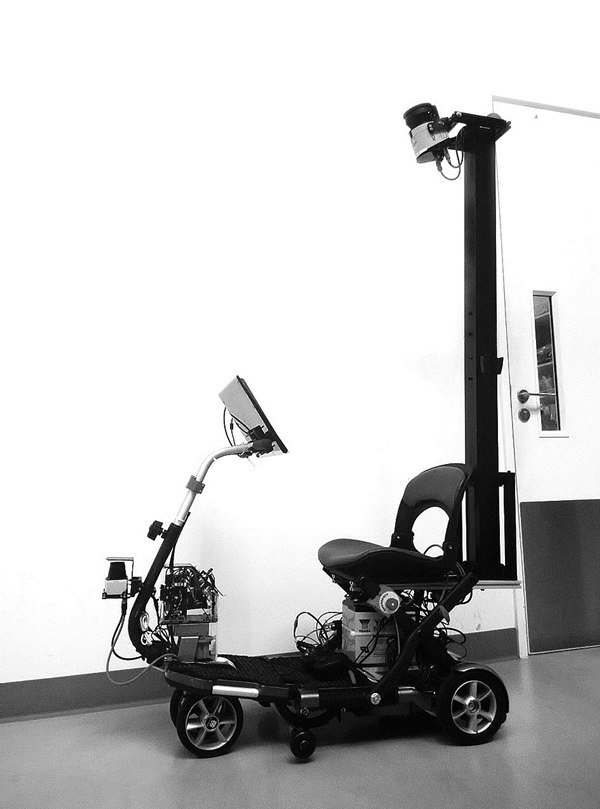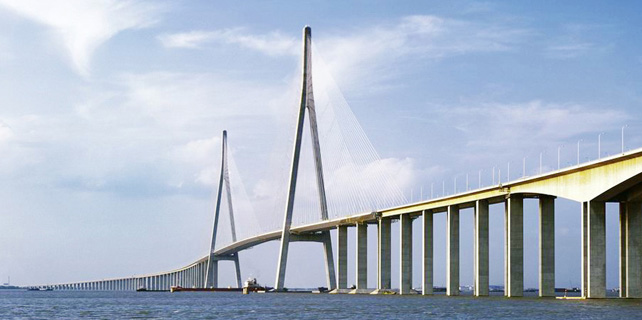Driving Change
 |
|
Researchers at National University of Singapore have rolled out a self-driving mobility scooter. Provided to China Daily |
For decades, robots have been called upon to tackle the “three Ds” of industry: tasks too dangerous, demeaning or dirty for humans.
“I add a new one — driving cars,” said Marcelo Ang, acting director of the Advanced Robotics Center at National University of Singapore. “We need autonomous vehicles, not because I want to sell you a self-driving car. I want to provide you more mobility through such cars.”
Once the realm of science fiction, self-driving cars are now being hailed as perhaps the biggest shake-up in transport since the internal combustion engine.
By 2020, more than 10 million driverless vehicles will be on the world’s roads, according to the Business Insider website. And forecasts by financial services firm Morgan Stanley say the autonomous vehicle market could be worth more than $2 trillion by 2025.
Yet it is not the traditional car-makers making the biggest waves in this up-and-coming market. Instead, tech firms and startups with little or no long-term experience are racing ahead with fresh concepts.
Some companies, such as electriccarmaker Tesla, are developing their own vehicles from scratch, while others are dabbling in artificial intelligence or sensor systems.
While the majority of these companies — which include Tesla, Google and taxi-hailing service Uber — operate out of Western nations, Asia is also playing an important role in autonomous vehicle development.
Japanese carmakers Hitachi, Toyota and Honda are all working on their own vehicles. Chinese tech giant Baidu is also heavily invested, and has been adapting other brands’ cars to be self-driving with Baidu technology.
In August, Singapore became the first country in the world to try self-driving taxis. Operating in select areas of the city-state, the project is a partnership between taxi-hailing app Grab and nuTonomy, a software developer that focuses on self-driving artificial intelligence.
For this pilot project, a driver and engineer will be present in each car.
Though the prospect of even 10 or 15 percent of all vehicles on the roads being driverless is unlikely to be realized until around 2030, autonomous vehicles are set to bring practical benefits.
According to a study by management consulting firm AT Kearney, road traffic accidents are liable to be cut by up to 70 percent, vehicle maintenance costs would drop by 35 percent and insurance premiums would fall by as much as 15 percent.
The World Economic Forum estimated that this transition, referred to as “digitization”, could add $3.1 billion in societal benefits.
According to Albert Lam, a research assistant professor in the department of electrical and electronic engineering at University of Hong Kong, the future of autonomous cars may be a public-private hybrid — “a new kind (of public transport system) created between the two”.
“This new model is something like Uber,” said Lam, who is also an expert on smart cities.
He points to a system where not-in-use private autonomous vehicles could be leased to a platform managed by a central brain. Instead of sitting idle while owners are away, driverless cars could work as taxis, deliver goods or assist with other on-demand mobility services.
Ang from NUS concurred. “We may still need private cars, but only for recreational driving,” he said. “There will be people who want to own their own vehicle, but they’ll be in a minority. It depends on how good the public transport is.”
For some Asian cities like Singapore or Hong Kong, car ownership can be prohibitively expensive or regulated. Therefore, the concept of cars making money for owners holds a certain appeal.
And it is not only cars that designers are looking at. Autonomous trucks are another possibility. A further application is on a smaller scale: autonomous personal scooters.
“People don’t take public transport as often as they should because they have to take a bus to the train station or take a bus from the train station,” said Ang. He gave an example of how a scooter that covers that “last mile” would help boost public transport, while creating a car-light society.
Last month, researchers at NUS rolled out a self-driving mobility scooter. The one-seat, four-wheel vehicle travels at a top speed of 6 kilometers per hour and has laser sensors to help navigate around obstacles.
Designed for narrow pathways, it can be used both outdoors and indoors, and is ideal for places like university campuses, hospitals or airports. It shows great potential to transport the elderly, those above the legal drink-drive limits, or even those who seem perpetually glued to their smartphones.
Ang told China Daily that these self-driving scooters cost around S$15,000 ($10,500) and could go into mass production “tomorrow” with little effort. Outfitting a car with the same equipment would cost around S$25,000, an approach Ang said is based on the developers’ “minimalist” system of robotic development.
By comparison, Google’s autonomous equipment is the bulky LIDAR, or light detection and ranging system, which is bolted to the hoods of its cars. This system costs upwards of $80,000. It is an expense Elon Musk, CEO and cofounder of Tesla, has described as “unnecessary”, although the industry widely considers LIDAR’s all-weather capabilities, accuracy and distance measurement superior to other methods.
Baidu also uses LIDAR, and along with carmaker Ford invested a combined $150 million earlier this year with the aim of making the system more affordable.
It is part of the Chinese brand’s big push to mass produce affordable self-driving cars by 2021. Baidu argues that the majority of cars will be autonomous by 2028.
In order to do that, the company has thrown itself into key areas like mapping and artificial intelligence. Moving Forward, a report by Darrell M. West of the Center for Technology Innovation at the Brookings Institution, a US think tank, reported that Baidu has already mapped 6.7 million kilometers of Chinese roads for navigation purposes.
But due to China’s rapid pace of infrastructure development, these maps have to be updated every few days. By comparison, most Chinese cities update their maps every three months.
Such rapidly changing, clogged and bottlenecked infrastructure has been the bane of regular transport for years. Getting computer-operated cars to adapt to it may require a serious shake-up in Asian infrastructure.
“Currently most vehicles, even the current autonomous vehicles, are considered as individual entities,” said Lam from the University of Hong Kong. “However, future autonomous vehicles have the capacity of communicating with one another and a central ‘brain’ through advanced vehicular communications technologies.
“Instead of each vehicle making its own travel plan, the central brain can also make collective decisions for the vehicles involved, based on the current traffic conditions. This makes the vehicles more cooperative and smarter.”
Countries like Indonesia and the Philippines, which might benefit immensely from autonomous cars to free up gridlocked highways and relieve pressure on public transport, have lagged behind in vehicle development, though there are signs of movement.
For instance, Ayala Corp, one of the Philippines’ biggest conglomerates, announced in August that it was preparing to invest $100 million in self-driving vehicles.
Legislation is another area where autonomous vehicle makers have had to tread carefully. While Singapore and China have been proactive in investing in this market and pushing to get driverless cars on the road, other countries and territories, including the United States, have proved far less forthcoming in changing the rules.
In Hong Kong, Tesla, despite having built-in autonomous capabilities, found its semi-autonomous autopilot system banned, then unbanned, and now seemingly in limbo.
Some of this may have to do with the first fatality, in May. The driver of a Tesla car in Florida was killed when the vehicle, in self-driving mode, collided at high speed with a truck that had turned in front of it.
Investigations are still ongoing into whether the crash actually had anything to do with the autopilot system. Nonetheless, it still managed to raise a lot of ethical issues.
After all, if an autonomous car knocks you down, who is at fault? And should cars be programmed to guarantee the safety of their passengers or random bystanders?









